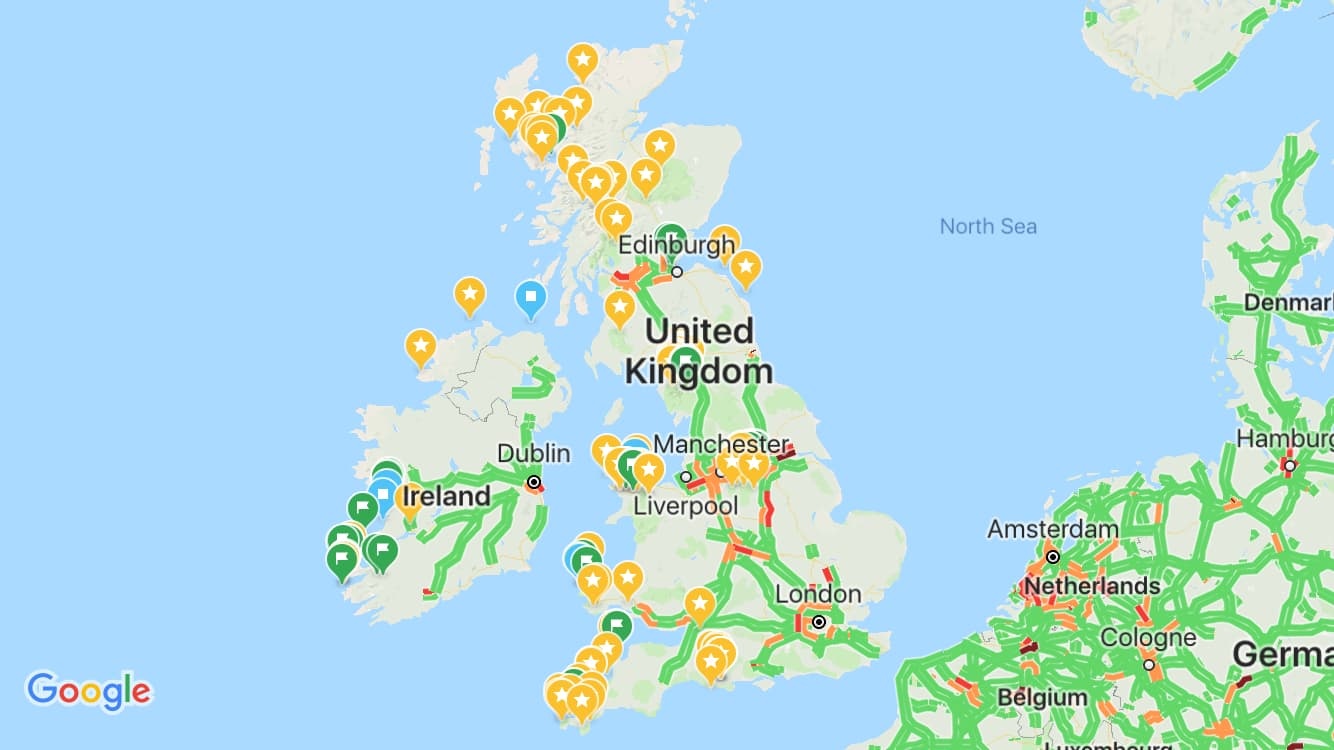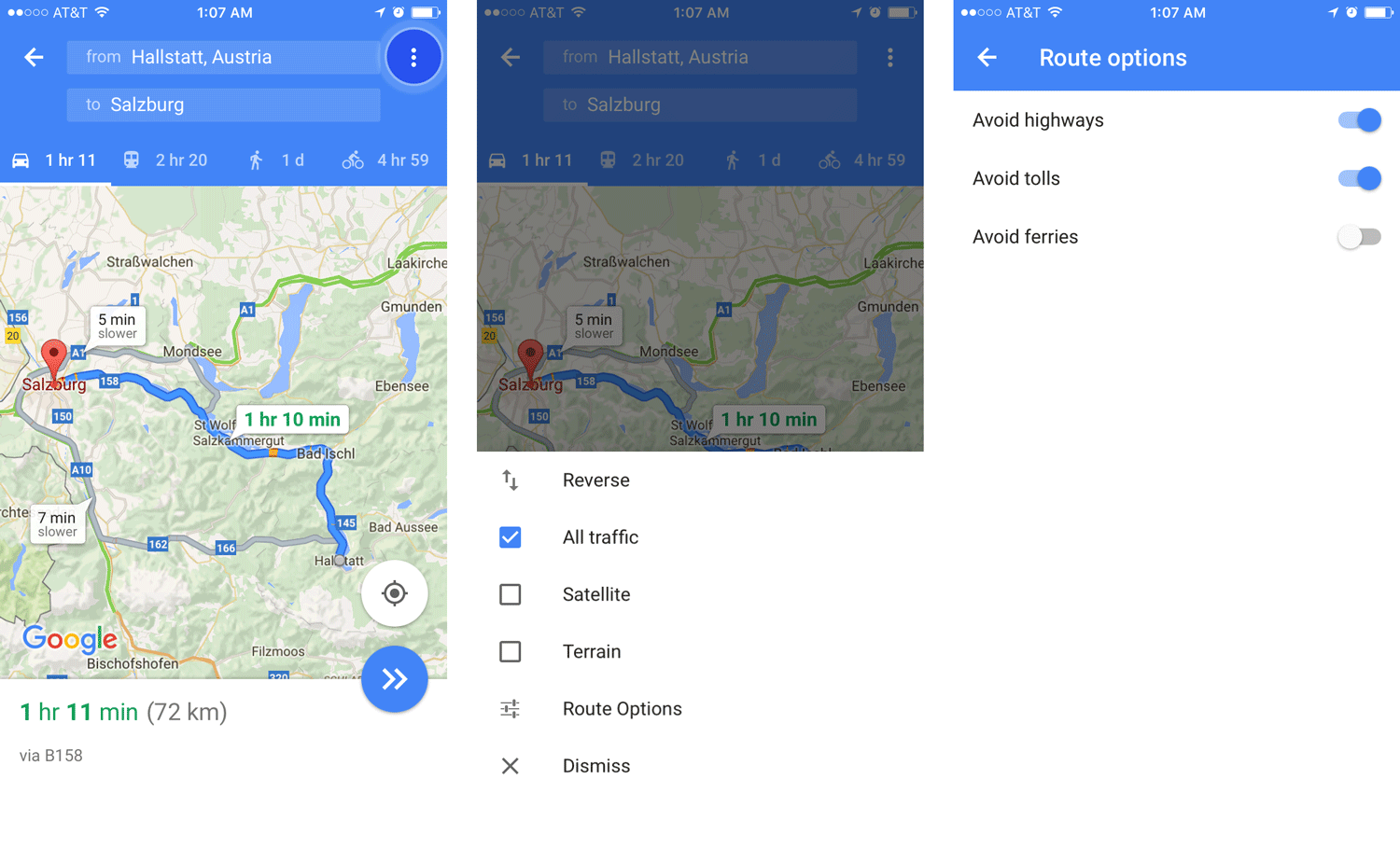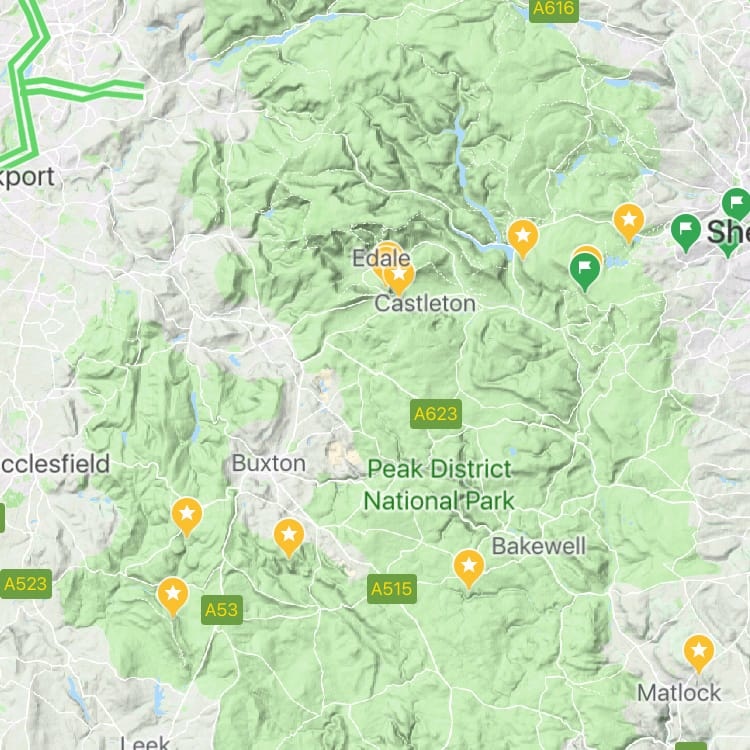Getting ready for your next landscape photography expedition? If you want to bring back winning shots, you need a variety of great places to shoot. Points of interest are easy to find, but the easy-to-find places are prime targets for hordes of tourists.
If you want to capture unique locations, the popular spots are the first to strike off your list. But if you wait until your arrival to discover these locations, you will waste precious days on random recommendations from your bed and breakfast host, then waste hours re-booking accommodations for a more scenic area. Tired of tourist traps and bucket lists? Here are five steps that have helped me discover my favorite off-the-beaten-path landscape photography spots before booking a trip.
1. Plan to Book a Rental Vehicle
It’s impossible to overstate how important it is to rent your own vehicle. If you take public transit, you will find public spots. The best landscape photography is rarely near a train stop, even in countries with fabulous public transit. So read up on driving overseas, turn on the “no highways” option in Google Maps, and enjoy the open road!
2. Pick Your Genre and Shoot Goals
Flexibility always helps, but usually, you need to pick the genre you want to shoot to narrow down what you’re looking for. This post covers finding good landscape photography spots, but you can narrow down further to:
- Coastal and seascapes
- Mountains
- Astrophotography
- Time-lapses
- Long exposure
- Panoramas
- Dramatic weather like winter scenes or storm photography
How many points of interest should you catalog? This depends on your keeper rate. To get one winning shot per day, I aim for two or three unique landmarks per day. My goal for a two-week trip is to shoot 14 images I’d be proud to put in my portfolio, and to accomplish that, I need to find at least 28–42 non-touristy points of interest.
3. Build a Collection of Landmarks
How can you find 30 undiscovered landmarks before the trip? After all, if you’ve heard of the spot, be it a humble city in a Jane Austen novel or a random Instagram shot from Iceland, it’s probably been turned into a tourist attraction.
Search Google for Scenic Regions
Start with naive Google searches like “best landscape photography in west Ireland.” This usually pulls up well-known tourist traps, often with awful photos, but it can help you track down particularly scenic regions. For example, the Cliffs of Moher are the top point of interest in Ireland, but I quickly discovered that County Kerry and the Wild Atlantic Way are astoundingly beautiful with a wide diversity of landmarks.

The idyllic and murderously overshot Cliffs of Moher are part of a scenic region with much (more) to offer.
Search Google Maps for Green
Next, focus on technical questions: which locations have all the geographic elements for a compositionally sound photo and a diversity of views?
It’s fair to say that Google Maps is my number one landscape photography app. I spend quality time searching Google Maps for topographically interesting regions. Usually, this means looking for green areas: national parks, mountains, nature preserves, etc.
Use the Terrain View to Find Sharp Variances in Altitude
Sadly, just because it’s a national park doesn’t mean it’s pretty. On my last trip to the UK, I visited the Peak District and Lake District. The Peak District was pleasant, but not especially photogenic; in contrast, the Lake District was idyllic with dramatic variances in the terrain. The incredible differences between these districts is reflected by only subtle changes on Google Maps, but they become more pronounced if you use the terrain view. Here’s the Peak District:
And the Lake District:
Beatrix Potter had good taste. The Lake District is simply flooded with interest: dramatic mountains, valleys, lakes, and tarns. The Peak District is also exceptional, but the terrain view shows that it’s more uniform. Perhaps if I had discovered the terrain view before my trip, I would have spent more time around Edale.
Look for Broken Coastlines
Maps can help you find great coastal photography too. Unbroken stretches of coast, especially that run due north–south, are often dull since the light either sets over the water or inland. When there’s only one direction you can shoot, you risk wasting hours of beautiful light on an inflexible landmark. So, look along the coast for topographically varied regions with coves and peninsulas.

Ireland’s Dingle peninsula has rich coastlines with coves and mountain ranges. No wonder it’s an artist haven!
Search for Possible Angles
Next, search the web for photos of the candidate regions. When I can’t find anything on a specific site, I fall back to Google Images. You may not find great shots, so it may take some imagination to focus solely on the spot’s technical merits.
4. Plan a Route and Accommodations
As I discover promising points of interest, I pepper Google Maps with pins. This makes it easy to pick out clusters as you book accommodations and plan potential routes.

Road Trippers might be well suited for your needs: just input all your points of interest, and it will build an optimal route. Sadly, in practice, I’ve found it has an extremely limited database of landmarks and is useless for trips outside the US. If you know of an exceptional website or app for planning and journaling a photography trip, let me know in the comments!
5. When You Get There
If you’ve planned well, you should end up with a densely varied route to make your camera shutter purr, but the search for great spots doesn’t end after arrival!
Don’t Ask Your Bed and Breakfast Host
You’ve probably lost count of the times you’ve been told to “ask your host for recommendations!” In five years of globetrotting, I can think of only one winning photo that I wouldn’t have otherwise taken. Hosts tend to suggest touristy places their guests have visited, and if you specify non-touristy spots, they’ll share their favorite “picturesque” hangout that lacks photographic appeal. The few occasions I’ve received a good suggestion, it was already on my list.
So, don’t rely on your hosts for photography recommendations. However, do ask your hosts about conditions, parking, getting there, and alternate routes. During a trip to Oregon, I assumed the road to Lost Lake was impassable. My host knew better, and thanks to his tips, I made it out to Lost Lake!

Browse Local Art Galleries
If you go into town, peruse the art galleries. These locals know what they’re about, and their artistic eye is a fabulous asset for discovering great viewpoints. If they’re conversational, they may even share great insider tips for getting there!
Navigate Without Highways
For all your drives, disable highways and toll roads in Google Maps. Many of my all-time favorite photos came from locations I wouldn’t have otherwise stumbled upon.

Take backroads by turning on the "Avoid highways" option in Google Maps.
Pretend You’re a Drone
Often, you’ll reach a landmark, only to find the main view is mediocre: it may feel like the wrong angle or have an unexceptional foreground. But if you were a drone, where would you go to get the right angle, proportions, and composition? See if you can get higher up — higher up, closer to, or farther from the subject almost always does the trick.
Once you’ve mentally picked some viewpoints, browse Google Maps in terrain view for side roads and neighborhoods closer to your ideal viewpoint. With a bit of practice, you may discover an uncommon viewpoint!
Do you have a killer trick for finding non-touristy spots for great landscape photography? Share it in the comments!

















Great tips! Thanks a lot!
Hope they're useful! Any trips in the works?
Later in the summer we'll be heading out to Washington in the Seattle area. Maybe next year we'll go to Japan again. Having a Japanese In-laws living there there makes finding non-touristy areas easier but they don't always have the same ideas about what makes an interesting landscape. ;-)
Washington sounds 👌
Sounds like I should change "Don't Ask Your B&B Host" to "Don't Ask Your In-Laws"? It seems to be a recurring misconception among my friends/family that visually "busy" landscapes make a good photo... guess that's why it's up to us to discover these places =)
You should change it to "Don't take recommendation from non-photographers". So often people say, "oh - there is a very beautiful viewpoint - you must go there". And in 99% of the cases this does not work.
Hah, that would've felt overly overly harsh to write but that's pretty much 💯 the gray area is when they lead the conversation with "I have a DSLR..."
Avoid Highways. <- THIS! Should be repeated 100 times :)
🙌 I just wish Google Maps could route you without highways in offline mode!
Going to Morocco next month. Not sure if avoiding the highways is actually safe :D
Hmm, but then again maybe you won't face many tourists to begin with! Have you picked out some spots?
If you have access to 4x4, look for the Forest Service roads. Here's a link to maps: https://www.fs.fed.us/visit/maps
You'll find these all around mountains, lakes, etc., and you can usually get to a point where the scenery is much nicer than the normal tourist spots. When you're planning your trip, pick your general area using google maps and then find the FS roads around it. As a bonus, most cars can't travel these roads (well, they can once. lol!) so you'll rarely come across another human, which means no gawkers to accidentally stick their head into your shot.
That's photographer gold, Mark. Thanks for sharing! Do you have a keeper photo in mind you wouldn't have otherwise found?
I captured this at Lake Jocassee in upstate SC. There's a rutted out service road that runs around the mountain and down to the pristine lake. No development is allowed in the area, although they do allow some primitive camping, so no houses and no asphalt to deal with in the photo.
This isn't the best photo -- I had some, um, camera user errors (I didn't check my settings before I hung off the side of the rock) -- but I plan to take another run up there sometime in the next couple of weeks to get the shot.
Best on getting "the shot"! I'll have to check out those maps next time I make it out to a US park.
Dingle <3 the most beautiful place on earth.
Visited my uncle over there when I was 8.
He has lived there since 1991, and I've told myself that I would have gone back soon.
Sadly he just moved away last month... to Italy, he is alive D;